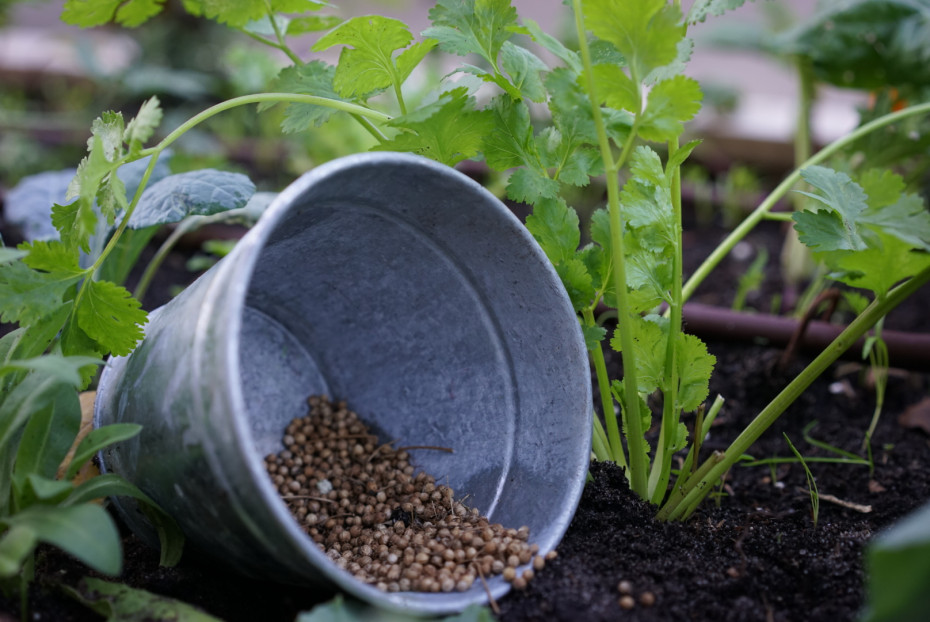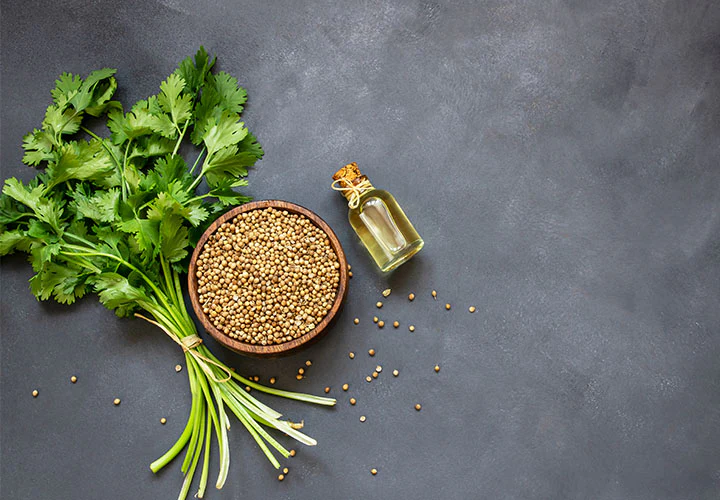Coriander, also known as cilantro or Chinese parsley, is one of the world’s most versatile herbs. Whether you use its fresh leaves to garnish your favorite dishes or its seeds as a fragrant spice, coriander adds a burst of flavor that elevates your culinary creations. The best part? It’s surprisingly easy to grow at home — whether in a kitchen windowsill pot, a backyard herb bed, or a balcony garden.
In this comprehensive guide, we’ll walk you through how to grow coriander from seed to harvest, offering practical tips to keep your plants lush, healthy, and brimming with fresh leaves. Ready to spice up your kitchen garden? Let’s dive in!

Why Grow Coriander at Home?
Coriander is a favorite among home gardeners for several reasons:
- Quick-growing herb — ready to harvest in just a few weeks.
- Versatile usage — both the leaves (cilantro) and seeds (coriander spice) are edible.
- Rich in health benefits — packed with antioxidants, vitamins A, C, and K.
- Ideal for small spaces — grows well in containers and windowsills.
- Delightfully aromatic — freshens up your kitchen and garden.
Plus, there’s nothing like the flavor of freshly picked coriander straight from your own plant!

Best Time to Plant Coriander
Coriander is a cool-weather herb. It prefers temperatures between 50°F–85°F (10°C–29°C).
- In temperate regions: Early spring or fall are ideal planting times.
- In warm or tropical climates: Grow it in shaded areas during cooler months.
Avoid the hottest summer weeks as coriander tends to “bolt” (flower and go to seed) quickly in high heat, which can make the leaves bitter.

Choosing the Right Variety
While most people are familiar with common coriander, there are several varieties you can grow:
- Calypso — Slow to bolt, great for leaf harvest.
- Leisure — Popular kitchen garden variety with full leaves.
- Confetti — Finely cut, fern-like leaves, excellent for garnishes.
- Santo — Another bolt-resistant variety ideal for warm climates.
Choose a slow-bolting variety if you live in a warmer region to enjoy prolonged harvests.

How to Grow Coriander from Seeds
Coriander is best grown from seed as it doesn’t transplant well due to its delicate taproot.
Seed Preparation:
- Coriander seeds come in a round pod. For better germination, crush the pod gently to split it into two halves.
- Soak the split seeds in water for 12–24 hours to speed up germination.
Soil Preparation:
- Soil Type: Well-draining, fertile soil rich in organic matter.
- pH Range: 6.2–6.8.
- Sunlight: Full sun to partial shade.
Mix in compost or aged manure to improve soil texture and fertility.
Sowing the Seeds:
- Sow seeds directly into pots, raised beds, or garden soil.
- Plant them 1/4 inch deep and 6 inches apart.
- Water gently and keep the soil consistently moist but not waterlogged.
Seeds typically germinate in 7–14 days.
Caring for Your Coriander Plant
Once your coriander seeds have sprouted, they need some basic care to thrive.
Light:
- Full sun (4–6 hours daily) is ideal.
- In very hot climates, provide light afternoon shade to prevent bolting.
Watering:
- Keep soil consistently moist, especially during dry spells.
- Avoid overwatering as coriander dislikes soggy roots.
- Water early in the morning to prevent fungal diseases.
Fertilizer:
- Coriander isn’t a heavy feeder.
- Apply a balanced liquid fertilizer (like 10-10-10) once or twice during the growing season.
- Top-dress with compost or organic mulch to retain moisture and add nutrients.
Harvesting Coriander
For Leaves (Cilantro):
- Begin harvesting when plants are 6 inches tall (about 3–4 weeks after sowing).
- Use scissors to snip off the outer leaves, leaving the inner stems to continue growing.
- Regular harvesting encourages bushier growth.
For Seeds (Coriander Spice):
- Allow the plant to flower and form seed heads.
- Once the flowers dry and seeds turn light brown, cut the seed heads and place them in a paper bag.
- Hang the bag in a dry, shaded spot for a week.
- Shake the bag to release the seeds and store them in an airtight jar for cooking.
Propagating Coriander
Coriander primarily propagates by seed. To keep a continuous supply:
- Succession sowing: Plant new seeds every 3 weeks for a steady harvest.
- Save seeds from mature plants for future sowing.
Common Problems and Solutions
While coriander is generally easy to grow, it can occasionally face a few issues:
Bolting (Premature Flowering)
Cause: Hot weather, drought stress, or overcrowding.
Solution: Grow bolt-resistant varieties, keep soil moist, and plant in partial shade during hot months.
Aphids
Symptoms: Sticky leaves, stunted growth.
Control: Spray plants with a mixture of water and mild dish soap, or use neem oil.
Powdery Mildew
Symptoms: White, powdery coating on leaves.
Control: Improve air circulation, avoid overhead watering, and use organic fungicide if needed.
Growing Coriander in Pots
Coriander thrives in containers, making it perfect for patios, balconies, and kitchen windowsills.
Pot Selection:
- Choose a 6–8 inch deep pot with good drainage.
- Fill with light, well-draining potting mix.
Care Tips:
- Water regularly to keep soil moist.
- Position in a sunny window or a spot with partial shade in hot weather.
- Harvest leaves regularly to encourage new growth.
Health Benefits of Coriander
Not only is coriander a culinary star, but it also boasts several health benefits:
- Rich in antioxidants and essential vitamins.
- Aids in digestion and appetite stimulation.
- Known to help regulate blood sugar and cholesterol.
- Contains natural anti-inflammatory properties.
- Traditional uses in treating acne, nausea, and anxiety.
Adding homegrown coriander to your meals is a tasty way to boost your overall health!
Uses of Coriander in the Kitchen
Fresh coriander leaves are essential in:
- Salsas and chutneys
- Curries and soups
- Salads and marinades
- Garnishing tacos, noodles, or rice dishes
Coriander seeds are used in:
- Pickling and spice blends
- Curries and stews
- Homemade herbal teas
Both parts of the plant offer distinct flavors — the leaves with a fresh citrusy punch and the seeds with warm, nutty notes.
Final Thoughts
Growing coriander is a simple, rewarding experience that adds fresh flavor and fragrance to your home and meals. With its quick growth, minimal care needs, and versatility in the kitchen, it’s a must-have for every home gardener.
By following these easy, natural growing tips, you’ll be snipping lush green leaves in no time and perhaps even harvesting your own coriander seeds for spice jars.
So grab a packet of seeds, find a sunny spot, and spice up your recipes with your very own coriander plant — a little green friend that keeps giving!





Leave A Comment